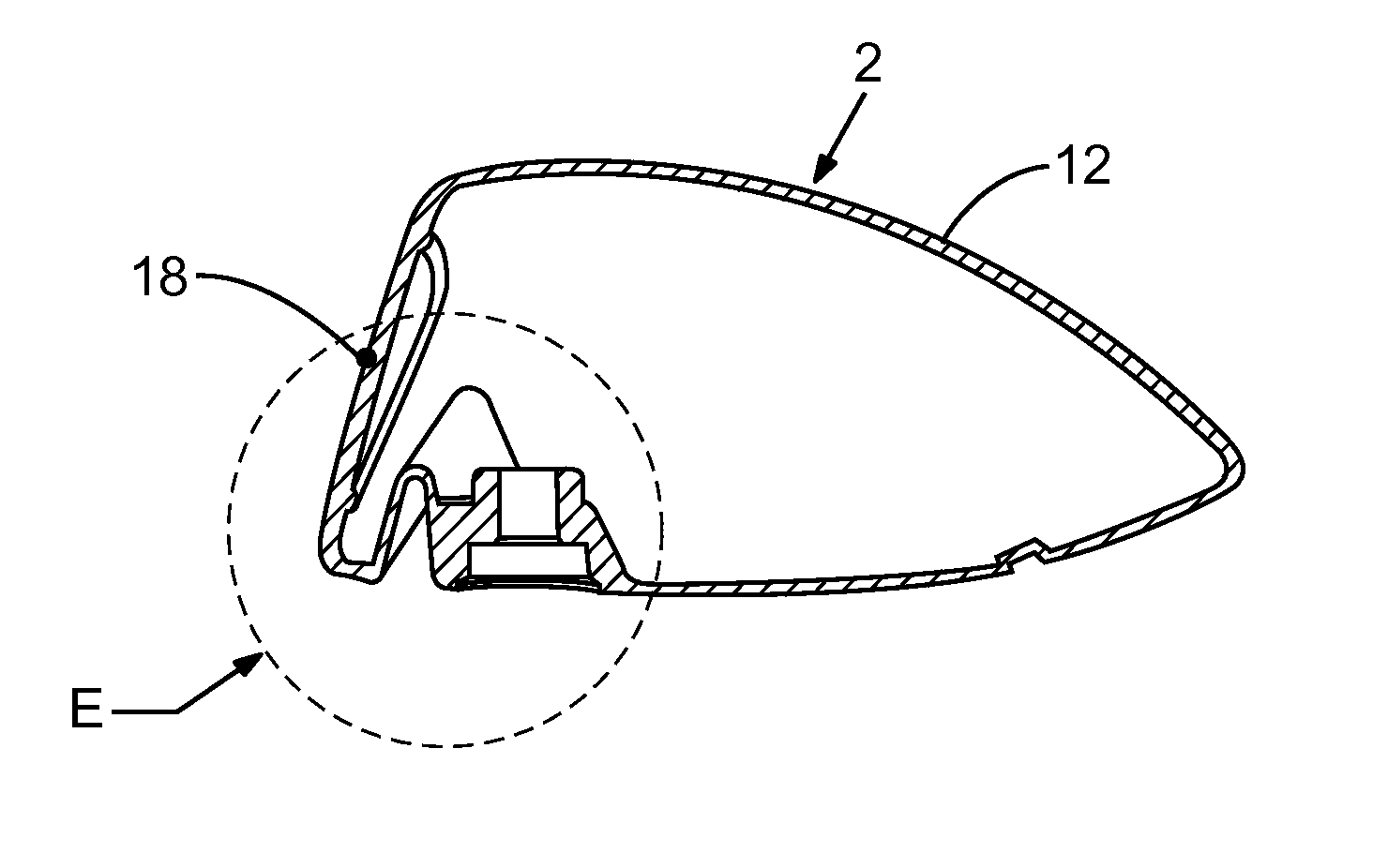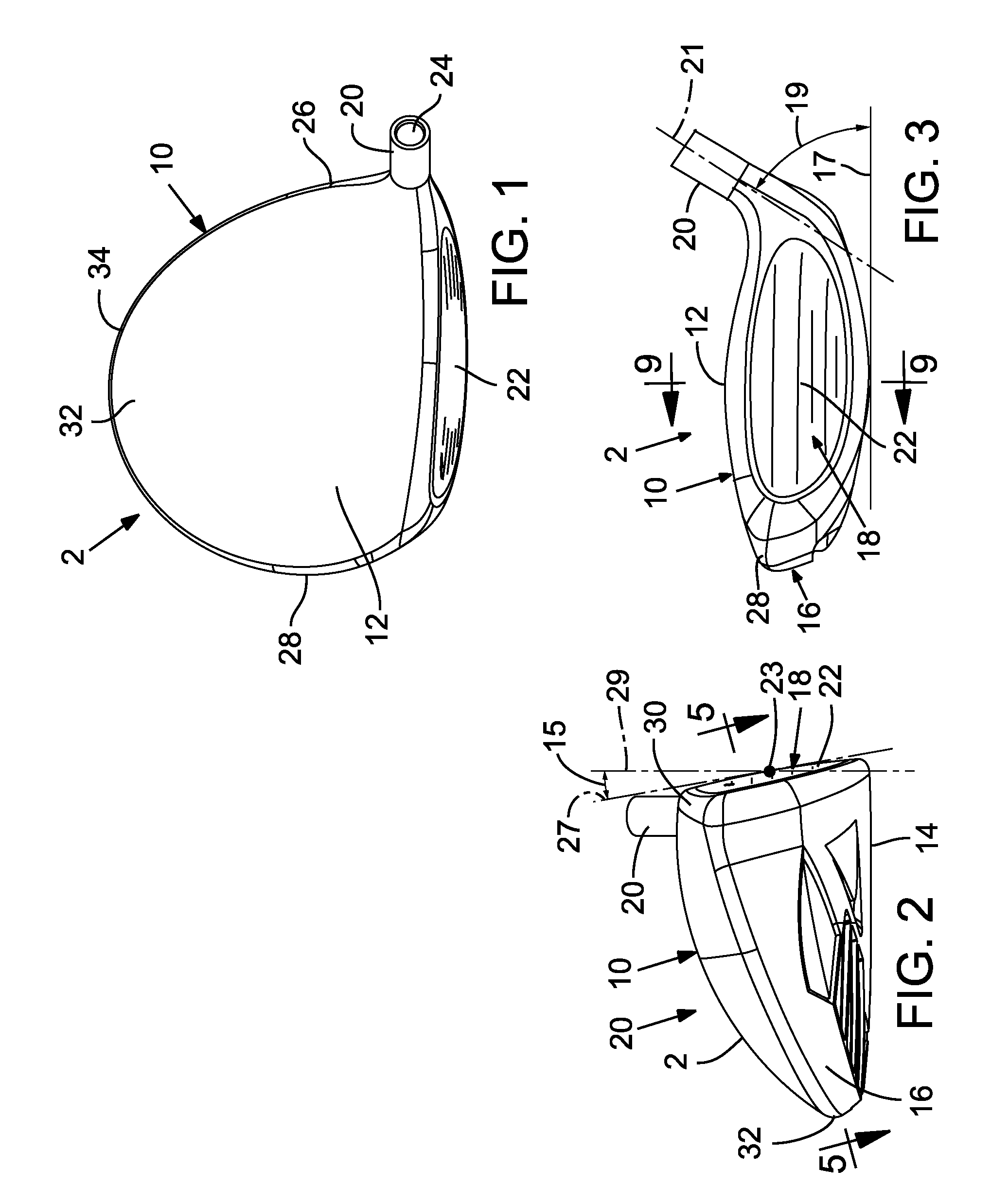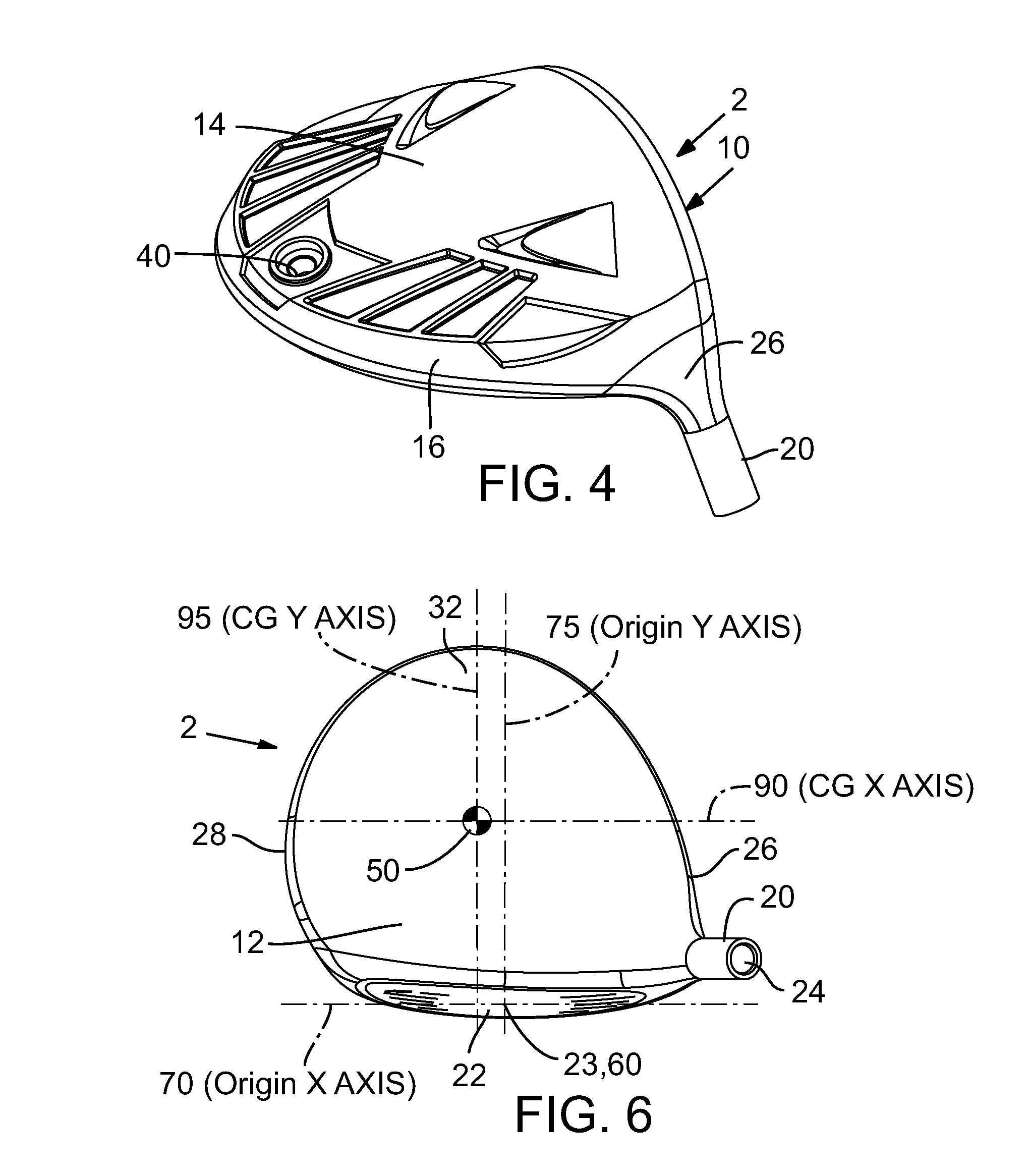Fairway wood center of gravity projection
- Summary
- Abstract
- Description
- Claims
- Application Information
AI Technical Summary
Benefits of technology
Problems solved by technology
Method used
Image
Examples
example 1
[0184]Club heads formed according to the Example 1 embodiment are formed largely of an alloy of steel. As indicated by Table 1 and depending on the manufacturing tolerances achieved, the mass of club heads according to Example 1 is between about 210 g and about 220 grams and the Zup dimension is between about 13 mm and about 17 mm. As designed, the mass of the Example 1 design is 216.1 g and the Zup dimension 15.2 mm. The loft is about 16 degrees, the overall club head height is about 38 mm, and the head depth is about 87 mm. The crown is about 0.60 mm thick. The relatively large head depth in combination with a thin and light crown provides significant discretionary mass for redistribution to improve forgiveness and overall playability. For example, the resulting mass moment of inertia about the CG z-axis (Izz) is about 325 kg-mm2.
example 2
[0185]Club heads formed according to the Example 2 embodiment are formed largely of an alloy of titanium. As indicated by Table 1 and depending on the manufacturing tolerances achieved, the mass of club heads according to Example 2 is between about 210 g and about 220 grams and the Zup dimension is between about 13 mm and about 17 mm. As designed, the mass of the Example 2 design is 213.8 g and the Zup dimension 14.8 mm. The loft is about 15 degrees, the overall club head height is about 40.9 mm, and the head depth is about 97.4 mm. The crown is about 0.80 mm thick. The relatively large head depth in combination with a thin and light crown provides significant discretionary mass for redistribution to improve forgiveness and overall playability. For example, the resulting mass moment of inertia about the CG z-axis (Izz) is about 302 kg-mm2.
examples 1 and 2
Overview of Examples 1 and 2
[0186]Both of these examples provide improved playability compared to conventional fairway woods, in part by providing desirable combinations of low CG position, e.g., a Zup dimension less than about 16 mm, and high moments of inertia, e.g., Izz greater than about 300 kg-mm2, Ixx greater than about 170 kg-mm2, and a shallow head height, e.g., less than about 46 mm. Such examples are possible, in part, because they incorporate an increased head depth, e.g., greater than about 85 mm, in combination with a thinner, lighter crown compared to conventional fairway woods. These features provide significant discretionary mass for achieving desirable characteristics, such as, for example, high moments of inertia and low CG.
[0187]
TABLE 1ExemplaryEmbodimentUnitsExample 1Example 2Massg216.1213.8Volumecc181.0204.0CGXmm2.54.7CGYmm31.836.1CGZmm−3.54−4.72Z Upmm15.214.8Loft°1615Lie°58.558.5Face Heightmm26.330.6Head Heightmm3840.9Face Thicknessmm2.002.30Crown Thicknessmm0....
PUM
 Login to View More
Login to View More Abstract
Description
Claims
Application Information
 Login to View More
Login to View More - R&D
- Intellectual Property
- Life Sciences
- Materials
- Tech Scout
- Unparalleled Data Quality
- Higher Quality Content
- 60% Fewer Hallucinations
Browse by: Latest US Patents, China's latest patents, Technical Efficacy Thesaurus, Application Domain, Technology Topic, Popular Technical Reports.
© 2025 PatSnap. All rights reserved.Legal|Privacy policy|Modern Slavery Act Transparency Statement|Sitemap|About US| Contact US: help@patsnap.com



